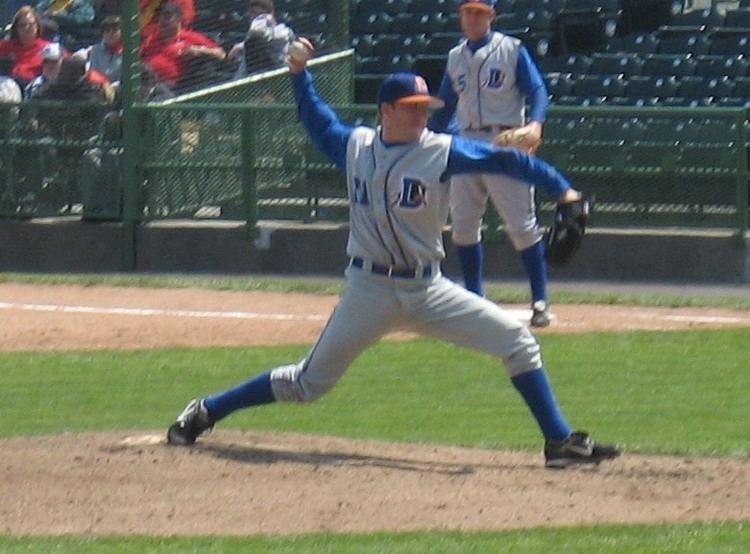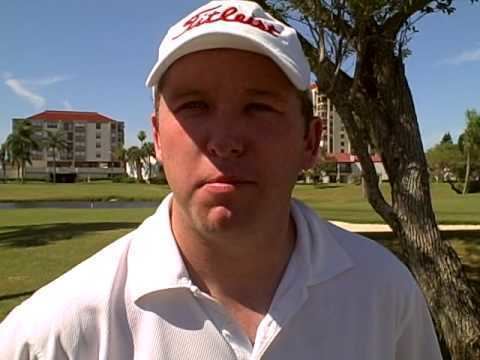Win-Loss 4-10 Role Baseball player Earned run average 5.79 Height 1.80 m | Strikeouts 66 Weight 88 kg Name Chad Orvella Date joined 2005 | |
 | ||
Education | ||
Chad Robert Orvella (born October 1, 1980) is a former Major League Baseball relief pitcher. He played his collegiate ball for Columbia Basin College. After two years there, he transferred to North Carolina State University as a shortstop. Orvella was drafted in 2003 in the thirteenth round of the MLB draft by the Tampa Bay Devil Rays.
Contents
- Early life
- College experience
- Minor League playing time
- Major League playing time
- Notables and life after baseball
- References

Early life

Orvella grew up in Redmond, Washington playing many sports. He came from a sports family with his dad being a big golfer, and his mom a tennis player. As a kid and all the way up through high school, he played soccer, golf, basketball, and baseball. As a young boy, he played baseball and golf most, and he excelled in both. Orvella fell in love with baseball as a young boy. His father worked for a company with season tickets to the Seattle Mariners baseball games, and he was able to come along. As his father entertained clients in the luxurious box seats of the stadium, Chad sat in the cushioned chairs with his eyes fixed on the game. He went to fifteen or twenty games each year. Orvella began playing baseball at the age of four at the tee ball level for his little league. As he moved forward throughout his playing time, he constantly found himself on all the all-star teams. He was always one of the littlest guys on the team but didn’t let that affect his play. He played his high school ball at Eastlake High School in Washington, and although wasn’t recruited very heavily, he did get an offer he took from Columbia Basin College.
College experience
Orvella started his Junior College ball as a very small player, at about five foot eight, one hundred and fifty-five pounds. Being that he was so small he had to go the Junior College route. He had every intention as using it as a minor set back, and a stepping-stone to get into a bigger Division I baseball program. He received offers from almost every ACC program, and Texas. Ultimately, Orvella chose to take his talents to North Carolina State University in his junior year. He excelled at shortstop there and being that he had grown in size, he was showing bigger, stronger, and faster at the plate and in the field. During his senior year, he pitched roughly ten to twelve innings, and the MLB scouts began to really take notice that he could pitch very well and play shortstop. When scouts approached him and asked him if he would enter the MLB draft as a pitcher, he said he would do anything to get to the next level. He was a hard throwing righty who repeatedly could pound the strike zone. All but one team wanted him to pitch at the next level.
Minor League playing time
Orvella was drafted in the thirteenth round of the 2003 MLB draft by the Tampa Bay Devil Rays. Interestingly enough, they were that one team who was going to draft his as a shortstop. In late 2003, after his college ball was over, he reported to Rookie ball in New York for the Hudson Valley Renegades. He brought along all his equipment to play shortstop, but upon his arrival was called into the office by the manager and told the team wasn’t sure what they would do with him. He returned to the field after the meeting and was told to go throw a bullpen. In his first game, he came in for two innings of work and struck out five of six batters. The organization officially declared he would be a pitch for them. Orvella's pitching repertoire consists of a 95 mph fastball as well as a changeup and a slider.He threw fifteen innings that year before tearing his lateral meniscus in his right knee that put an end to the already short season. He returned in 2004, which would prove to be one of his best seasons. He started at low A level ball in Charleston, South Carolina. He made the all-star team at that level, and just after that game, he was promoted to High A ball. A month later he was promoted to AA ball in California and a month after that he was promoted to AAA ball in Durham, North Carolina. Following this extremely successful year he was awarded the 2004 minor league pitcher of the year.
Major League playing time
Orvella made his major league debut on May 31, 2005, against the Oakland Athletics. After that time, he was sent back to AA where he would pitch thirty innings and allow only one run. He was called up to the MLB for the Devil Rays the day before Memorial Day and stayed with the MLB team for the rest of the year. He pitched so well that in 2006 he was the front-runner for the closer position. He pitched in AAA for two weeks before going back to the MLB team. That year he struggled to stay in the MLB and went up and down between AAA and MLB. He dominated AAA hitters, but his delivery to the plate was too slow for manager Joe Maddon, so when he tried to quicken it, he lost his accuracy and would get hit. This is what led to his up and down and led to not getting the role as closer. In 2007, he stayed in the Big Leagues for half a year as their left-handed specialist. Though he was a righty, there were no lefties in the bullpen and he was most effective against left-handed hitters. In 2008, he hurt his shoulder in spring training, which ended that season. He rehabbed and worked back to make an appearance in 2009. He spent his first half of the season with the Rays before he was released. He was picked up by The Kansas City Royals and finished the season with them. In 2010, he signed with the Angels but didn’t last very long with them. After the surgery and rehab, he was never able to get his velocity back. Before hand he was throwing roughly ninety-five and after only about eighty-five on his fastball. This is ultimately what led to him getting released, and deciding to call it quits.
Notables and life after baseball
In his time pitching, he had three wins over Mariano Rivera and the Yankees. His very first pitch to Derek Jeter was a homerun. While in the Cape Cod leagues, there was a book written about him and his team called The Last Best League. In my interview with him I asked what his biggest accomplishment was during his time, he responded with meeting my wife Kristine Orvella while playing in a game with Tampa Bay. She was at the game and caught his attention. They have a baby girl, a beagle named Molly, and currently reside outside Seattle, Washington.
